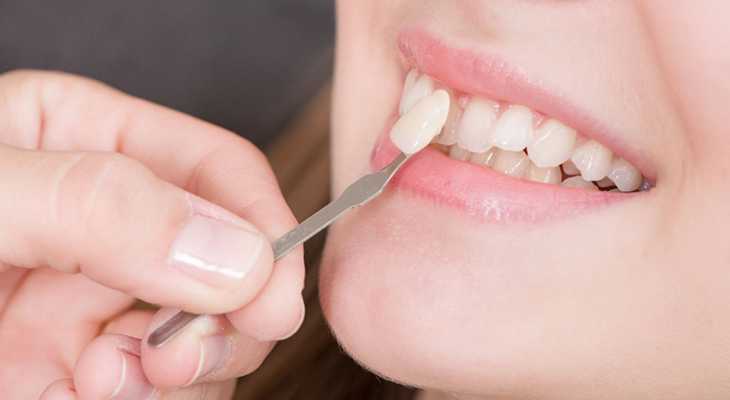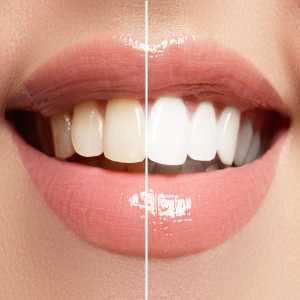
Dental Veneers Vs Crowns: What's The Difference?

When it comes to improving or restoring your smile, dental veneers and crowns are two common choices. Although they have different goals and features, both procedures can enhance the look and functionality of your teeth. Determining which treatment is best for you might be aided by knowing the distinctions between crowns and veneers. To further understand the distinct advantages and uses of dental veneers and crowns, see this in-depth comparison.
What Are Dental Veneers?
Dental veneers are thin, precisely crafted shells that are attached to the front of teeth in a color that matches the natural tooth. Their main application is in cosmetics, where they are used to fix minor misalignments, gaps, cracks, and discolouration. Porcelain or composite resin can be used to make veneers; porcelain veneers are the more common option because of its longevity and natural appearance.
Key Features of Veneers:
- Purpose: Cosmetic enhancement and minor functional improvements.
- Material: Typically porcelain or composite resin.
- Coverage: Covers only the front surface of the tooth.
- Tooth Preparation: Minimal tooth reduction is required, usually removing a small amount of enamel.
- Procedure: The process involves preparing the tooth, taking impressions, and bonding the veneers.
- Lifespan: On average, porcelain veneers last 10 to 15 years; composite veneers last 5 to 7 years.
What Are Dental Crowns?
Dental crowns, also known as caps, are restorations that cover the entire tooth, encasing it completely. They restore a damaged or decayed tooth's shape, size, and function. Crowns can be made from various materials, including porcelain, metal, or both. They are often used for teeth that are significantly weakened, fractured, or heavily restored.
Key Features of Crowns:
- Purpose: Restoring function and structure of damaged or weakened teeth.
- Material: Can be made from porcelain, metal, or a combination (porcelain-fused-to-metal).
- Coverage: Covers the entire tooth, providing complete protection.
- Tooth Preparation: Requires significant reduction of the tooth structure to fit the crown.
- Procedure: The process involves preparing the tooth, taking impressions, and placing a crown over the prepared tooth.
- Lifespan: Crowns typically last 10 to 15 years, with metal crowns often lasting longer.
Key Differences Between Veneers and Crowns
1. Purpose and Application
- Veneers are primarily used for cosmetic improvements, such as correcting stains, chips, or minor misalignments. They are less invasive and focus on the appearance of the front teeth.
- Crowns restore the function and structure of severely damaged or decayed teeth and provide full coverage and protection to compromised teeth.
2. Extent of Tooth Preparation
- Veneers Require minimal tooth preparation, usually involving removing a small amount of enamel from the tooth's front surface.
- Crowns: Require more extensive tooth preparation, significantly reducing the tooth structure to accommodate the crown.
3. Coverage and Protection
- Veneers: Cover only the tooth's front surface, exposing the back and sides. They are ideal for enhancing the appearance of the visible parts of your teeth.
- Crowns: Cover the entire tooth, providing complete protection and restoring its shape and function. They are suitable for teeth that need significant reinforcement.
4. Material Options
- Veneers: These are commonly made from porcelain or composite resin. Porcelain veneers offer a natural appearance and are more resistant to staining.
- Crowns: Porcelain, metal, or a combination of the two can be used to make crowns. Metal crowns are highly durable, while porcelain crowns offer a natural look.
5. Longevity and Durability
- Veneers typically last 10 to 15 years, and porcelain veneers are more durable than composite. They are resistant to staining but can be prone to chipping or cracking.
- Crowns generally last 10 to 15 years or longer, especially if made from metal. They are highly durable and can withstand significant chewing forces.
Which Option Is Right for You?
The decision between crowns and dental veneers is based on your unique requirements and the state of your teeth:
- Veneers may be the best option to enhance the appearance of your front teeth with minimal tooth preparation. They are ideal for addressing cosmetic issues and achieving a natural-looking smile.
- Crowns are more appropriate if you have a tooth that is severely damaged, decayed, or structurally compromised. They provide comprehensive protection and restoration for teeth that require more extensive treatment.
Conclusion
Both dental veneers and crowns play important roles in modern dentistry, each offering unique benefits depending on your individual needs. Veneers are excellent for cosmetic enhancements with minimal tooth preparation, while crowns provide complete coverage and protection for damaged teeth. You may choose the best course of action for reaching your goals and preserving your dental health by speaking with your dentist. When recommending the best course of action, your dentist will take into account a number of variables, including your overall dental health, cosmetic goals, and tooth condition.
If you live in Delhi and searching for a Dental Veneers In Delhi you should consider Veda Dentistry and Cosmetology. Call us to Book an Appointment: at +91- 9318481183.
Author Bio
Veda Dentistry and Cosmetology
12, AGCR Enclave, in front of Karkardooma Court Metro Station, Arjun Gali, A G C R Enclave, Anand Vihar, Delhi, 110092
09318481183
Facebook | Instagram | Linkedin | YouTube | Google Map
Article Comments
No Comments!
At present there are zero comments on this article.
Why not be the first to make a comment?
Similar Articles
Search Pages
User Upgrade
account to full use of editor,
Including hyperlinks
Article Categories
There are zero sub-categories in this parent category.
There are zero sub-categories in this parent category.

















